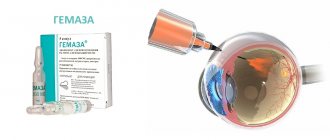I propose to look into two drugs that are prescribed incredibly often in obstetric and gynecological practice: Duphaston and Utrozhestan. What kind of drugs are these? Some consider them ineffective (and harmless), others fear them like fire, and still others consider them a salvation from almost any disease in the female body.
So, in essence, Duphaston and Utrozhestan are progesterone preparations:
- Duphaston - dydrogesterone (tablets, taken orally);
- Utrozhestan is a natural microionized progesterone (capsules taken orally or inserted into the vagina).
Progesterone is a hormone of the second phase of the cycle and a pregnancy hormone. It is produced by the corpus luteum in the ovary after ovulation (preparing the woman's body to accept a fertilized egg in the event of pregnancy), and also by the placenta later during pregnancy.
Indications for use of Duphaston and Utrozhestan
The indications (from the instructions) for taking these drugs indicate that they should be taken if there is insufficient production of their own progesterone (and this must be proven during the examination of the woman!) in women in the following situations:
- infertility due to luteal insufficiency (insufficient production of own progesterone in the luteal (second) phase of the cycle);
- premenstrual tension syndrome;
- menstrual irregularities due to ovulation or anovulation disorders (if there is no ovulation, there is no corpus luteum, there is no production of its own progesterone);
- fibrocystic mastopathy (this is taken from the instructions, I’ll say right away, I have no explanation or evidence base for this point);
- threatened abortion or prevention of habitual abortion due to progesterone deficiency;
- prevention (prophylaxis) of premature birth in women at risk (with shortening of the cervix and/or anamnestic data of premature birth and/or premature rupture of membranes);
- luteal phase support during preparation for in vitro fertilization;
- luteal phase support in spontaneous or induced menstrual cycle;
- hormone replacement therapy (in combination with estrogen-containing drugs);
- hormone replacement therapy for progesterone deficiency and non-functioning (absent) ovaries (egg donation);
- endometriosis;
- dysfunctional uterine bleeding.
I would like to emphasize once again that even the instructions for Duphaston and Utrozhestan indicate that they can/should be prescribed for progesterone deficiency in the above cases, and not for all women with infertility/irregular cycles/miscarriage.
Let's try to figure out what is known about the use of progesterone drugs for various diseases/conditions/interventions.
Premenstrual tension syndrome (PMS)
The use of progesterone drugs for PMS (which, by the way, affects 5% of women, and not every first lady) is discussed, since PMS symptoms occur before menstruation, when this hormone “dominates” in a woman’s body.
To be fair, it is worth noting that it is not entirely clear whether severe symptoms of PMS are the result of high levels of progesterone in the body or, conversely, a decrease in progesterone levels preceding the onset of menstruation. Despite many controversial issues both in the definition of PMS itself and in understanding its mechanisms, attempts to use progesterone preparations have been made repeatedly, and their results are well covered in the scientific literature.
What do we have today? Only one study showed a positive effect from the use of progesterone drugs in the second phase of the cycle in women with PMS, but the effect was assessed solely by the subjective feelings of the participants. The remaining studies on this topic are either not good enough to take into account their results, or have not shown any effect from the use of progesterone drugs in different forms (orally or vaginally) for PMS.
Conclusion: To date, the use of progesterone drugs for PMS cannot be considered scientifically justified.
Side effects of Duphaston
The following side effects are possible with the use of Duphaston:
- Headache, even migraine.
- Weakness, malaise.
- Pain in the abdominal area.
- Symptoms of jaundice.
- Allergic manifestations are itching and skin rashes. Urticaria and angioedema are rarely observed.
- Swelling of peripheral tissues.
Sometimes, when using Duphaston, disturbances in hematopoiesis and the immune system can be recorded.
Uterine bleeding
Uterine bleeding is a common problem for women of reproductive age. There are a variety of approaches to treating this problem, which can be caused by a variety of diseases. To stop uterine bleeding, regimens ranging from tablets to surgery to remove the uterus can be used. The use of progesterone preparations in this case has a logical justification: progesterone is the hormone of the second phase of the cycle, it is responsible for the changes that occur at this time in the endometrium (inner lining of the uterus), and for “keeping” the endometrium in its place (before menstruation, progesterone levels drop, the bleeding mechanism starts). Thus, an attempt to maintain high progesterone levels in women with uterine bleeding appears to be justified. What do the studies say? Indeed, there is an effect from the use of progesterone tablets, but other treatment methods (in particular, the levongestrel spiral) have a much more pronounced effect and significantly improve the quality of life of these patients. Sadly, the most effective method of treatment remains surgery to remove the uterus. However, levonorgestrel-containing IUDs should be tried before deciding on surgical treatment.
Conclusion: Progesterone tablets may have a positive effect in patients with uterine bleeding, but there are much more effective treatments that should be preferred.
Duphaston and its effects in the treatment of endometriosis
The main active ingredient of the drug is dydrogesterone, an analogue of natural progesterone. 1 tablet of Duphaston contains 10 mg of the active ingredient. Once in the body, it is quickly absorbed into the blood, its maximum concentration is observed after 2 hours. Dydrogesterone, selectively binding to progesterone receptors in the uterus, promotes the transition of the endometrium from the proliferation phase to the period of secretion, preventing its excessive growth. In addition, Duphaston, like progesterone, prepares the mucous membrane for possible pregnancy and implantation of the embryo, reduces the excitability of the muscular layer of the uterus and reduces its contractile activity.
It is worth noting that dydrogesterone is not a derivative of testosterone, therefore, when treating endometriosis with Duphaston, androgenic and anabolic activity, a masculinizing effect, disorders of differentiation and development of the fetus, and changes in body temperature are excluded. The drug does not change metabolism, so patients do not have to worry about gaining weight.
In addition, Duphaston reduces the effect of estrogen on the female body, therefore, it can be actively used for infertility and frequent miscarriages, uterine bleeding and other pathological conditions caused by excess estrogen. At the same time, it does not suppress the positive effects of these hormones, which prevent the formation of cardiovascular and nervous diseases.
In general, we can highlight the following positive effects of Duphaston in the treatment of endometriosis:
- Suppression of endometrioid tissue growth;
- Preservation of ovulation;
- Reduction or complete elimination of intermenstrual and uterine bleeding;
- Reducing the contractile activity of the uterus and, as a result, relieving pain;
- Prevention of relapse of the disease after surgery;
- Preventing the degeneration of endometrioid lesions into oncological neoplasms.
Menstrual irregularities
There are many causes of menstrual irregularities, and it is extremely important to establish a specific diagnosis before starting treatment. What is the potential mechanism of action of progesterone drugs in menstrual disorders?
If a woman’s first phase of the cycle works perfectly
If a woman’s first phase of the cycle works perfectly (the dominant follicle grows, the endometrium thickens, etc.), then ovulation occurs, and the corpus luteum does not work effectively enough and does not produce adequate levels of progesterone, the second phase turns out to be incomplete, and menstruation occurs at different times. time (since the most important signal for the onset of menstruation is a decrease in progesterone levels after its peak in the second phase).
The most appropriate solution to the problem in this situation is the prescription of progesterone drugs for the second phase of the cycle (from the 16th to the 25th day of the cycle). Before prescribing progesterone drugs, you should evaluate the hormones of the first phase, do an ultrasound (usually several times over time) to see that there is a dominant follicle, and then a corpus luteum (a sign of past ovulation), and then donate blood to determine the level of progesterone.
And if everything is fine with the hormones of the first phase, no abnormalities were detected by ultrasound, and progesterone after ovulation is low, then it makes sense to prescribe progesterone drugs. Everything is logical and correct, but one factor must be taken into account: this problem is casuistically rare.
If problems in the cycle are associated with a violation in the first phase
If problems in the cycle are associated with a violation in the first phase and stimulation of ovulation is required, progesterone drugs can also be useful (first, drugs are taken to stimulate ovulation, then the onset of ovulation is monitored by ultrasound, and only then progesterone drugs can be prescribed).
In such a situation, with proper and effective stimulation of ovulation, the level of progesterone may be normal, i.e. Progesterone supplements may not be needed. However, most often they are prescribed prophylactically, so as not to recheck the level of progesterone in each cycle after stimulation of ovulation and not to “miss” a single cycle for attempts to conceive during the stimulation process.
What happens if you prescribe progesterone without identifying the cause of the cycle disorder?
Most often, it is the lack of ovulation and problems in the first phase of the cycle (for which there are many reasons), and not isolated disorders of the second phase that lead to low progesterone levels. What will happen to such patients if progesterone drugs are prescribed to them incorrectly?
Classic situation: we have a patient with a cycle disorder, we take a test for progesterone in the second phase, we see low progesterone, we prescribe progesterone from outside to increase it! Logical? No!!! Such a patient most often does not ovulate, does not have a corpus luteum, and the endometrium is not formed! What are we doing when we prescribe progesterone? We “deceive” the body, showing it that everything is in order, the corpus luteum is there, progesterone is being produced. The body doesn’t even try to devote all its resources to achieving ovulation: if there is progesterone, ovulation has already passed, you can relax. That is, by prescribing progesterone according to the standard regimen (from the 16th to the 25th day of the cycle) to a woman with an irregular cycle, we with a certain probability prevent the onset of ovulation (without progesterone, the body “fights for ovulation” until the last; ovulation could have occurred on the 20th , and on the 30th day of the cycle, if we had not intervened with progesterone).
What happens to the cycle? A woman takes progesterone until the 25th day of the cycle, then the drug is discontinued, the body detects a signal about a decrease in the level of progesterone in the blood and triggers the onset of menstruation. From a woman with an irregular cycle we get a woman with a regular cycle. If the goal of treatment is predictability in a woman's life and a regular cycle, this approach can be used. If the goal of treatment is to normalize the functioning of the ovaries and conceive a child, progesterone drugs can be prescribed only after confirming the presence of ovulation in each cycle.
To avoid making such mistakes, it is necessary to carefully monitor what is happening with the cycle of a woman with irregular menstruation (hormones of the first phase, ultrasound in dynamics, progesterone in the second phase if there is ovulation), and only after making a diagnosis make a decision on prescribing/not prescribing any hormonal drugs.
Conclusion: Progesterone preparations are needed either for women with completely intact first phase of the cycle and ovulation, but low levels of progesterone after ovulation (which is extremely rare), or for women with disorders of the first phase after stimulation of ovulation (under strict control of ovulation by ultrasound).
Methods of using Duphaston
There are certain drug treatment regimens depending on the diagnosis and predicted effect, but in any case, the dosage and course of therapy are selected on an individual basis. When treating endometriosis with Duphaston, the doctor takes into account the degree of spread of the process, the neglect of the pathology, and the patient’s health condition.
As a rule, Duphaston during the treatment of endometriosis is taken 1 tablet 2-3 times a day, regardless of meals. It is recommended to start therapy on the 5th day of the menstrual cycle up to 25, but sometimes doctors recommend starting treatment the day after ovulation so as not to interfere with successful conception. With a regular 28-day cycle, ovulation occurs approximately on days 12-14; the ovulatory period can be calculated by the level of basal temperature, hormone concentrations, ultrasound, or using special tests. The course of treatment is long, in most cases lasting 9 months or more. After pregnancy occurs, you should not immediately stop taking the drug; the period of its use is adjusted by your doctor.
Support for the second phase of the cycle during IVF
As has already been mentioned several times, progesterone is the hormone of the second phase of the cycle. After ovulation, the corpus luteum forms in the ovary, which produces progesterone, which, in turn, prepares the endometrium (the inner lining of the uterus) for implantation of a fertilized egg.
Women undergoing IVF require drug support for the second phase of the cycle, either due to initially existing problems with the cycle, or due to inadequate production of their own progesterone after stimulation of the first phase of the cycle. In this situation, progesterone drugs are necessary and important, but there are fundamental points in their use:
- Progesterone drugs should be prescribed only in the second phase (that is, after there is all evidence of ovulation occurring).
- A woman receiving progesterone drugs in the second phase should be under medical supervision during the cycle (with regular monitoring by ultrasound and/or the level of certain hormones in the blood).
- Women with irregular cycles especially need to monitor ovulation in each cycle before starting progesterone drugs, as they are more likely to artificially suppress ovulation with these drugs if they are not started on time.
Prescribing progesterone drugs to support the second phase of the cycle as part of an IVF program does increase the likelihood of the onset and progression of pregnancy and the birth of a healthy baby, however, even in this situation there are unresolved issues, and research on other ways to support the second phase of the cycle continues.
Conclusion: Progesterone tablets can be used to maintain the second phase of the cycle as part of IVF programs, but only after the fact of ovulation has been established.
Hormone replacement therapy
Hormone replacement therapy (HRT) is used when a woman does not produce sufficient levels of her own hormones (at menopause (menopausal hormone therapy) or after surgery). In such situations, it is logical to “recreate” your own cycle by introducing appropriate hormones into the first and second phases of the cycle.
Progesterone preparations (in combination with estrogen preparations that mimic the first phase of the cycle) can be considered for these purposes, however, in the modern world there are many combined preparations for HRT (containing both estrogen and progestin components), which are preferred in such situations.
Conclusion: Duphaston/Utrozhestan can be used in combination with estrogens for hormone replacement therapy, but they are not the drugs of choice.
Special instructions for Duphaston tablets
The hormonal drug should be used with caution by persons with liver pathologies.
It is important to frequently screen the general condition of the body when combining the drug with estrogen. This is especially required by patients suffering from kidney diseases, cardiovascular diseases, migraines, diabetes and mental disorders.
It is not recommended to use the medicine for persons who have a lack of lactose in the body.
The hormonal drug can cause uterine discharge. If they appear, you should consult a doctor.
The medicine does not affect the ability to drive a vehicle, does not impair thinking ability or concentration.
Duphaston does not provoke excess weight gain.
Before starting the course, it is advisable to undergo a series of medical examinations, especially when taking the hormone as replacement treatment, in order to exclude complications in the future.
Endometriosis
With endometriosis, everything is simple and complicated at the same time. The difficulty is that the causes and mechanisms of its occurrence have not been sufficiently studied; there are many theories and discussions on this matter. The simplicity is that we consider this disease in the context of the use of two drugs (Duphaston and Utrozhestan), the effectiveness of which in the treatment of this disease has not been proven.
Hormone therapy can be used to treat endometriosis, but other medications should be considered, you can read more about this here.
Conclusion: Progesterone preparations should not be used to treat endometriosis.
Prevention of miscarriage
Probably the most common indication for prescribing Duphaston and Utrozhestan in Russia is the prevention of miscarriage in the early stages of pregnancy (precisely prevention, i.e. prescribing the drug to a healthy pregnant woman without signs of a threat of miscarriage; about situations where there is a threat of miscarriage, read below) . In this article I will not dwell on the fact that in many countries it is not customary to continue pregnancy in the early stages, because Most miscarriages in the first trimester are associated with genetic abnormalities in the fetus, and I will directly consider the effectiveness of progesterone drugs in this situation.
Again, given that progesterone is a pregnancy hormone, it is completely logical to try to maintain pregnancy in a woman who, for one reason or another, is classified as at risk (in Russia, the risk group (most often undeservedly) includes women with a previous loss of pregnancy, nagging pain in the lower abdomen in the early stages, “tone” according to ultrasound in the first trimester, etc.).
And now a surprise for many: progesterone drugs do not help prevent spontaneous abortion in the first and second trimester!
In other words, if the pregnancy persisted with Duphaston, it would have survived without it, and vice versa (if the pregnancy was terminated without Duphaston, it would have been terminated with this drug)! Moreover, it makes no difference in what form progesterone is taken: orally in the form of tablets, vaginally in suppositories or intramuscularly.
I would like to immediately make a reservation: in some cases, with recurrent miscarriage, progesterone drugs reduce the likelihood of miscarriage, but this only applies to those women who have previously suffered 3 or more pregnancy losses in a row.
Conclusion: Progesterone preparations in tablets, suppositories and injections should not be prescribed to prevent miscarriage in early pregnancy.
Duphaston contraindications
When using a hormonal drug, you should be more careful. The remedy is not indicated for everyone. Absolute contraindications for use are:
- Individual intolerance to the active component.
- Allergic reaction to excipients.
- The presence of itching during pregnancy.
Women suffering from chronic kidney failure should take the medicine with caution.
Treatment of threatened miscarriage
The threat of miscarriage is considered to be the presence of bloody discharge when the cervix is closed during pregnancy up to 20 weeks. If the cervix begins to dilate at this stage, maintaining pregnancy with any medications is extremely unlikely. I would like to emphasize that nagging pain in the lower abdomen, as well as the “tone” of the uterus according to ultrasound, are not signs of a threatening miscarriage.
Treatment of threatened miscarriage is possible only after an ultrasound scan, which confirms that the fetus:
- Located in the uterine cavity
- Alive
- There are no signs of serious developmental defects.
Treatment should be carried out in a hospital under the supervision of a doctor.
In this situation, progesterone drugs are effective and help reduce the incidence of spontaneous abortion, but most studies in this area have assessed the effectiveness of progesterone administered intramuscularly, and not in the form of tablets or suppositories (since the woman is in a hospital).
Conclusion: Progesterone drugs reduce the likelihood of miscarriage if there is a threat of miscarriage (bloody discharge is the main symptom!!!), but there is insufficient data on the effectiveness of these drugs in the form of tablets or suppositories.
Duphaston price, where to buy
The price of Duphaston tablets is, on average, 520-800 rubles. You can buy Duphaston in a Moscow pharmacy with a doctor's prescription. How much Duphaston costs in pharmacies in Novosibirsk, Omsk, Samara depends on the place of sale, but, on average, the cost of the drug is the same. At the Ozerki pharmacy the cost of the drug is on average 550 rubles.
The price of Duphaston in a Kharkov pharmacy does not differ from the cost in other cities (Kyiv, Odessa, Zaporozhye, Dnepropetrovsk, etc.). On average, in Ukraine the cost of Duphaston 10 mg (pack of 20 pieces) is 390 hryvnia.
- Online pharmacies in RussiaRussia
- Online pharmacies in KazakhstanKazakhstan
ZdravCity
- Duphaston tab.
p/o captivity. 10 mg No. 28 JSC Veropharm 828 rub. order - Duphaston tab. p/o captivity. 10mg No. 20AO Veropharm
RUR 595 order
Pharmacy Dialogue
- Duphaston (tab. ppl.vol. 10 mg No. 20) Abbot/Veropharm
625 rub. order
- Duphaston tablets 10 mg No. 28Abbot/Veropharm
RUB 845 order
- Duphaston tablets 10 mg No. 28Abbot
RUB 824 order
- Duphaston tablets 10 mg No. 20Abbot/Veropharm
RUR 637 order
show more
Treatment of premature birth
Preterm birth is a birth that occurs before 37 weeks of pregnancy. Premature birth can lead to severe consequences, in particular, the death of the child or severe long-term consequences for the baby’s health. That is why a huge amount of research has been devoted to studying methods of treating (or stopping the onset of) premature birth.
Progesterone is the key “pregnancy hormone”, and therefore it seems logical to try to use it in a woman whose labor began too early.
The standard treatment option for preterm labor is the use of tocolytics (drugs that relax the muscles of the uterus and stop/weaken contractions that have begun). A number of studies have attempted to use progesterone drugs to treat preterm labor with or without tocolytics. Despite the fact that individual studies have found an effect from the use of progesterone in women with the onset of preterm labor (weakening contractions, slowing down the process of shortening the cervix), there is still insufficient data to include this group of drugs in standard protocols for the management of women with preterm labor. Moreover, it cannot be said that drugs in this group can replace standard tocolytic therapy for premature birth.
Conclusion: Progesterone supplements may add benefit to women experiencing preterm labor, but they cannot replace standard treatment and should not be used in pill or suppository form (the forms discussed in this article).
Prevention of premature birth during singleton pregnancy in women at risk
Can progesterone medications prevent preterm labor in women at risk (i.e., women who have had a previous preterm birth or women with a shortened cervix on ultrasound).
Again, progesterone, being a pregnancy hormone, should help prolong pregnancy and prevent contractions from starting.
The results of many studies support this hypothesis and demonstrate that prophylactic administration of progesterone in late pregnancy to women at risk does reduce the likelihood of premature birth, stillbirth and other negative consequences for the fetus. To be fair, all this data was obtained for progesterone injections or pessaries containing progesterone (a device inserted into a woman’s vagina that releases the desired drug). Tablets and suppositories in this context have not been studied enough.
Conclusion: Progesterone drugs do help reduce the likelihood of premature birth in women at risk, but injections and pessaries have proven effectiveness. Tablets and suppositories have not been studied enough.
Prevention of premature birth in multiple pregnancies
About half of women carrying twins will give birth to their babies prematurely (i.e. before 37 weeks of pregnancy). With triplets and more fetuses, this risk is even higher. Premature birth poses a danger to the life and health of the child, and therefore many studies have been devoted to the issues of its prevention, including in multiple pregnancies.
Given that progesterone is the main hormone of pregnancy, it is logical to assume that its use will prolong pregnancy and improve outcomes for the child. However, existing studies on the use of progesterone in the form of injections or suppositories (tablets in this aspect have been poorly studied) have not revealed any advantages for mother and child. In other words, to date there is no reason to prescribe progesterone prophylactically to women with multiple pregnancies.
Conclusion: Progesterone preparations in suppositories and injections do not help in the prevention of premature birth in women with multiple pregnancies. Tablets in this aspect have been poorly studied.
Composition and release form
The drug is dispensed in the form of tablets for oral administration. Externally they are round, convex in shape on both sides. The color is white, covered with a thin soluble shell. They are engraved with the letter “S” and the number 155.
The tablets are packaged in blisters of 20 pieces and secondary cardboard packaging.
The active substance is dydrogesterone. Auxiliary components: lactose, starch, magnesium stearate, cellulose, dyes and colloidal silicon.
Preeclampsia
Preeclampsia is a serious pregnancy complication characterized by high blood pressure, proteinuria (protein in the urine), and swelling. Preeclampsia occurs in 2 - 8% of pregnant women. This condition affects blood vessels in various organs, including the placenta, which in turn can lead to fetal growth restriction and premature birth. The woman herself most often suffers from the kidneys, liver, brain, and blood coagulation system.
As is the case with many other pregnancy complications, there is no precise understanding of the mechanisms and causes of preeclampsia, so a lack of progesterone is considered one of the (though not the most likely) causes of the development of these disorders.
There are few studies on the use of progesterone drugs for the prevention and treatment of preeclampsia (in total they include about 1500 women), but none of them have demonstrated convincing data in favor of the use of progesterone. These drugs are also not included in international recommendations for the prevention and treatment of preeclampsia.
Conclusion: To date, the use of progesterone drugs for the treatment and prevention of preeclampsia cannot be considered justified.
Let's sum it up
When can progesterone preparations discussed in this article (Duphaston, Utrozhestan) be prescribed?
- menstrual irregularities (after confirmation of ovulation and progesterone deficiency after ovulation)
- IVF programs (after confirmation of ovulation)
- uterine bleeding (but there are much more effective treatments)
- hormone replacement therapy (with a very big stretch, since there are more convenient and studied drugs).
Progesterone preparations can be used to prevent and treat premature birth, as well as to treat threatened miscarriage, but not in the form of suppositories and tablets.
And a couple more comments.
Progesterone preparations cannot be called harmless and harmless. They have quite a few side effects, the most common of which include:
- menstrual irregularities
- amenorrhea (lack of menstruation)
- headache
- bloating
And the last extremely important aspect!
Under no circumstances should you prescribe or discontinue progesterone medications on your own!!!
This can lead to serious consequences for the body, particularly during pregnancy. If, after reading this article, you have any doubts about how justified the use of these drugs is in your situation, be sure to discuss your doubts with your doctor and stop taking the drugs only under the supervision of a doctor!!!
Sources:
- https://www.ncbi.nlm.nih.gov/pubmed/6424972
- https://www.popline.org/node/469942
- https://www.cochrane.org/CD003415/MENSTR_progesterone-for-premenstrual-syndrome
- https://www.cochrane.org/CD006175/PREG_progesterone-for-preventing-pre-eclampsia-and-its-complications
- https://www.cochrane.org/CD002126/MENSTR_use-of-progesterone-or-progestogen-releasing-intrauterine-systems-for-heavy-menstrual-bleeding
- https://www.cochrane.org/CD006770/PREG_use-of-progesterone-for-treating-preterm-labour
- https://www.cochrane.org/CD009154/MENSTR_luteal-phase-support-assisted-reproduction
- https://www.cochrane.org/CD012024/PREG_prenatal-progestogens-preventing-preterm-birth-women-multiple-pregnancy
- https://www.cochrane.org/CD003511/PREG_progestogen-for-preventing-miscarriage
- https://www.cochrane.org/CD005943/PREG_progestogen-for-treating-threatened-miscarriage
- https://onlinelibrary.wiley.com/doi/10.1002/14651858.CD004947.pub3/full








